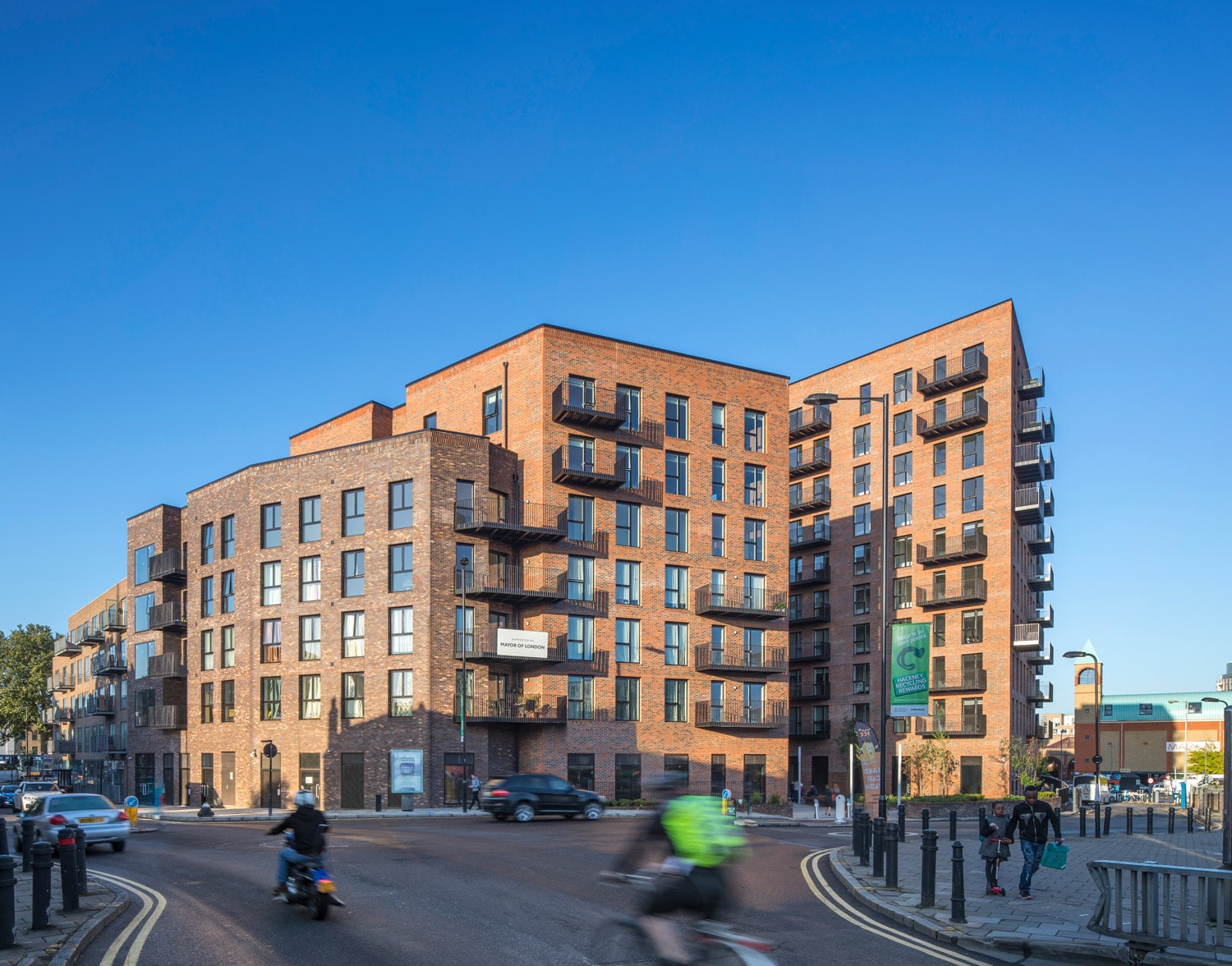Story at a glance:
- Cross-laminated timber (CLT) is an extremely strong and durable type of mass timber that has been gaining in popularity due to its strength and sustainable benefits.
- The production process allows the material be used in a variety of ways, including as flooring, walls, ceilings, and building frames.
- Dalston Works, the world’s largest CLT building, weighs one-fifth of a concrete building of the same size with a significantly lower carbon footprint.
When it comes to new construction, there are a lot of sustainable building materials to choose from. One popular choice: wood. Of course, building with wood is not a new phenomenon—but cross-laminated timber, or CLT, is relatively new to the building industry. First developed in the 1990s in Austria, CLT has been slowly gaining traction in the US and comes with a variety of environmental benefits.
So what is CLT? Let’s explore how designing with this engineered wood can improve a project.
What is CLT?
CLT, a type of mass timber, is a solid wood panel made from layering boards in alternating directions that are bonded together with structural adhesive. This fusion process creates a lightweight yet extremely strong building material—so strong that it can replace concrete or steel—that is also fire- and earthquake-resistant. Mass timber refers to a category of wood products in which multiple layers of solid wood panels have been affixed to one another by glue, nails, or dowels.
What Makes CLT Sustainable?
Using CLT can significantly reduce the carbon footprint of the building in both material production and onsite energy consumption.
One of the biggest problems with other materials are their carbon outputs. Cement and concrete manufacturing, for instance, is responsible for around 8% of global greenhouse gas emissions—more than any country except the US and China. Add on top of that the global iron and steel industry, which is responsible for another 5%.
Additionally around half a ton of CO2 is emitted per one ton of concrete produced, and 2 tons of CO2 are emitted to produce one ton of steel. Swapping concrete or steel for CLT can reduce those emissions.
Onsite, because CLT is also prefabricated, it can be installed quickly, leaving minimal waste and reducing construction times.
How is CLT Used?
The wood layering that happens during the production process can create slabs of wood as large as 18 feet by 98 feet wide and up to a foot thick. The average slab hives much smaller than this at about 10 feet by 40 feet.
Because of the ability to produce large slabs, the material can be used in a variety of ways: as flooring, walls, ceilings, and as the frame for entire buildings.
CLT in Practice
Take one of the world’s largest CLT buildings, Dalston Works, for example. CLT was used for the floors, walls, stairs, and shafts of the building. In using it the team at architecture firm Waugh Thistleton Architects was able to create a healthier work environment for the construction crew, Andrew Waugh, partner at the firm, says.
Prefabrication meant less noise and dust, as well as less waste and onsite deliveries, which were reduced by an estimated 80%. The building was also constructed faster than if traditional building materials were used, shaving about eight months off of the building timeline, Waugh says.
The final result is a 10-story, 121-unit residential building that weighs about one-fifth of a concrete building of the same size, with a significantly lower carbon footprint in both material production and on-site energy consumption.





